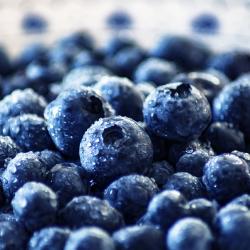The Role of Fiber in Your Diet and How to Get Enough
Fiber is an essential component of a balanced diet, yet it often doesn't receive the attention it deserves. This dietary powerhouse plays a crucial role in maintaining digestive health, regulating blood sugar levels, and even reducing the risk of chronic diseases. Understanding the importance of fiber, knowing how much you need, and identifying the best sources can significantly contribute to overall well-being.
What is Fiber?
Dietary fiber, also known simply as fiber, is a type of carbohydrate found in plant-based foods that the body cannot digest. Unlike other carbohydrates, fiber passes through the digestive system relatively intact, aiding in various bodily functions along the way. There are two types of fiber: soluble and insoluble. Soluble fiber dissolves in water, forming a gel-like substance that can help lower blood cholesterol and glucose levels. Insoluble fiber, on the other hand, does not dissolve and helps move material through the digestive tract, promoting regularity.
Benefits of Fiber
-
Digestive Health: Fiber is perhaps best known for its ability to prevent or relieve constipation. It adds bulk to the stool and facilitates smoother passage through the intestines. A diet high in fiber can also reduce the risk of developing hemorrhoids.
-
Heart Health: Soluble fiber can help lower blood cholesterol levels by binding to cholesterol particles in the digestive system and removing them from the body. This can lead to reduced blood pressure and inflammation levels, offering protection against heart disease.
-
Blood Sugar Control: For people with diabetes or those at risk, fiber can slow the absorption of sugar, leading to steadier blood sugar levels. Diets high in fiber are associated with a reduced risk of developing type 2 diabetes.
-
Weight Management: High-fiber foods are generally more filling than low-fiber options, helping curb appetite and reducing overall calorie intake. This can be beneficial for weight management and obesity prevention.
-
Reduced Risk of Certain Cancers: Some studies suggest that a fiber-rich diet is linked to a lower risk of colorectal cancer. Fiber may also play a role in reducing the risk of other cancers, though more research is needed in this area.
How Much Fiber Do You Need?
The recommended daily intake of fiber varies based on age and gender. According to the Institute of Medicine, women should aim for 25 grams per day, while men should target 38 grams. However, actual intake is often much lower than these recommendations.
Top Sources of Fiber
-
Fruits and Vegetables: Apples, bananas, oranges, berries, carrots, and broccoli are all rich in fiber. Make a habit of incorporating colorful fruits and veggies into every meal.
-
Whole Grains: Opt for whole-grain bread, brown rice, quinoa, and oats instead of their refined counterparts. These grains retain more natural fiber.
-
Legumes: Beans, lentils, and chickpeas are excellent plant-based protein sources that are also packed with fiber.
-
Nuts and Seeds: Almonds, chia seeds, and flaxseeds not only add fiber but also provide healthy fats and proteins.
-
High-Fiber Cereals: Some breakfast cereals are specifically fortified with fiber. Check product labels for fiber content to help meet daily needs.
Tips to Increase Fiber Intake
-
Start Slowly: Increase fiber intake gradually to give your digestive system time to adjust. Abrupt changes can lead to bloating and gas.
-
Stay Hydrated: Drink plenty of water, as fiber works best when it absorbs water.
-
Mix it Up: Incorporate a variety of fiber-rich foods to enjoy broader nutritional benefits.
-
Read Labels: When shopping, choose products labeled with whole grains and check the nutritional info for fiber content.
Conclusion
Incorporating adequate fiber into your diet is an easy and effective strategy to enhance health and reduce the risk of many common diseases. With a few mindful dietary changes, you can ensure that you're getting enough fiber to support your digestion and overall health. Focus on natural sources, vary your food choices, and remember to increase fiber intake slowly to enjoy all its benefits without discomfort. A fiber-rich diet is a cornerstone of healthy living and a valuable tool in disease prevention and management.






















